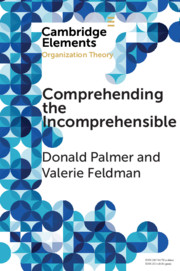Element contents
Comprehending the Incomprehensible
Published online by Cambridge University Press: 21 July 2018
Summary
- Type
- Element
- Information
- Series: Elements in Organization TheoryOnline ISBN: 9781108539524Publisher: Cambridge University PressPrint publication: 26 July 2018
References
- 16
- Cited by



